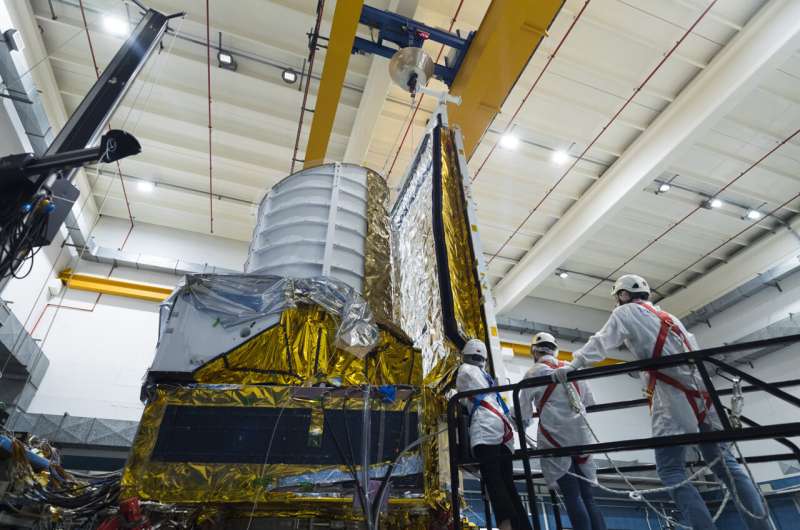Euclid gains solar power and protection

Spacecraft are not so different to humans—while the sun can be a great source of vital energy, both people and machines must also be protected from its harmful effects.
In this image, taken on 23 May 2022, engineers at Thales Alenia Space in Turin are attaching a combined sunshield and solar panel module to the main body of ESA's Euclid spacecraft. The module has two functions: whilst the solar panels will provide the spacecraft with power, the sunshield will shade the instrument-carrying payload module from the sun's intense radiation.
Euclid is a space telescope designed to explore the dark Universe. It will make a 3D-map of the cosmos (with time as the third dimension) by observing billions of galaxies out to 10 billion light-years, across more than a third of the sky. In doing so, Euclid will tackle some of the most fundamental questions in cosmology—questions like: How did the Universe originate? Why is the Universe expanding at an accelerating rate? What is the nature of dark matter? What is dark energy?
The previous step in Euclid's journey, taking place on 24 March 2022, involved attaching Euclid's payload module to its supporting service module. Next up, engineers will add the communications antenna and then Euclid will be complete. Finally, Euclid will be taken to Cannes where the complete spacecraft will be tested to check that it is ready for launch from Europe's Spaceport in French Guiana.
Provided by European Space Agency





















